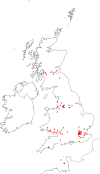Aerosol precautions and airway complications: a national prospective multicentre cohort study
- PMID: 36070622
- PMCID: PMC10087829
- DOI: 10.1111/anae.15851
Aerosol precautions and airway complications: a national prospective multicentre cohort study
Abstract
The perceived risk of transmission of aerosolised viral particles from patients to airway practitioners during the COVID-19 pandemic led to the widespread use of aerosol precautions, including personal protective equipment and modifications to anaesthetic technique. The risk of these aerosol precautions on peri-operative airway complications has not been assessed outside of simulation studies. This prospective, national, multicentre cohort study aimed to quantify this risk. Adult patients undergoing general anaesthesia for elective or emergency procedures over a 96-hour period were included. Data collected included use of aerosol precautions by the airway practitioner, airway complications and potential confounding variables. Mixed-effects logistic regression was used to assess the risk of individual aerosol precautions on overall and specific airway complications. Data from 5905 patients from 70 hospital sites were included. The rate of airway complications was 10.0% (95%CI 9.2-10.8%). Use of filtering facepiece class 2 or class 3 respirators was associated with an increased risk of airway complications (odds ratio 1.38, 95%CI 1.04-1.83), predominantly due to an association with difficult facemask ventilation (odds ratio 1.68, 95%CI 1.09-2.61) and desaturation on pulse oximetry (odds ratio 2.39, 95%CI 1.26-4.54). Use of goggles, powered air-purifying respirators, long-sleeved gowns, double gloves and videolaryngoscopy were not associated with any alteration in the risk of airway complications. Overall, the use of filtering facepiece class 2 or class 3 respirators was associated with an increased risk of airway complications, but most aerosol precautions used during the COVID-19 pandemic were not.
Keywords: COVID-19; aerosol precautions; airway complications; intubation.
© 2022 The Authors. Anaesthesia published by John Wiley & Sons Ltd on behalf of Association of Anaesthetists.
Figures
Comment in
-
Hypothesis-generating procedures and unmasking novel associations in large observational studies: are we doing harm while doing good?Anaesthesia. 2023 Jan;78(1):9-13. doi: 10.1111/anae.15877. Epub 2022 Sep 30. Anaesthesia. 2023. PMID: 36178605 No abstract available.
-
Respirators and complications of airway management.Anaesthesia. 2023 Mar;78(3):392-393. doi: 10.1111/anae.15883. Epub 2022 Oct 7. Anaesthesia. 2023. PMID: 36205378 Free PMC article. No abstract available.
References
-
- Cook TM, Woodall N, Frerk C. Major complications of airway management in the UK: results of the Fourth National Audit Project of the Royal College of Anaesthetists and the Difficult Airway Society. Part 1: anaesthesia. British Journal of Anaesthesia 2011; 106: 617–31. - PubMed
-
- Cook TM, El‐Boghdadly K, McGuire B, McNarry AF, Patel A, Higgs A. Consensus guidelines for managing the airway in patients with COVID‐19: guidelines from the Difficult Airway Society, the Association of Anaesthetists the Intensive Care Society, the Faculty of Intensive Care Medicine and the Royal College of Anaesthetists. Anaesthesia 2020; 75: 785–99. - PMC - PubMed



